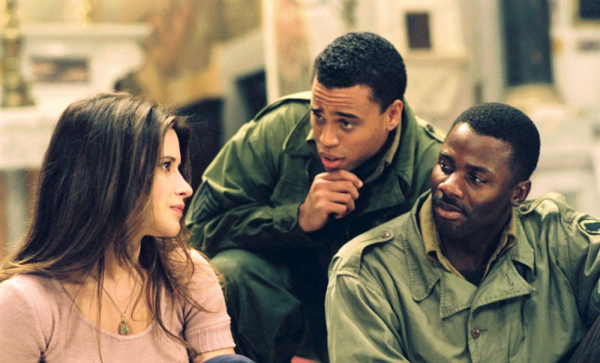Movie review by Greg Carlson
A largely frustrating, mostly disappointing adaptation of James McBride’s novel, “Miracle at St. Anna” bears the hallmarks, and then some, of many a Spike Lee joint. Despite the seasoned filmmaker’s audacious personal stamp, the movie plays like an overwrought made-for-television miniseries, piling numerous subplots on top of one another with little regard for audience sympathy. This author wrote recently that Joel and Ethan Coen sometimes make movies in which they demonstrate contempt for their characters. In Spike Lee’s case, it is the viewer who appears to be on the receiving end of the moviemaker’s scorn and derision.
The old writing adage “show don’t tell” is not a lesson Lee has learned. He shows plenty, but he also has the tremendously annoying habit of spoiling many beautiful moments by adding some dialogue that points out the obvious. At his very best, in movies like “Do the Right Thing,” Lee tempers his loquaciousness with a talent for sensational compositions and strong pacing. “Miracle at St. Anna” occasionally seems like it was directed by someone else entirely, and the battle sequences in particular unfold with little sense of narrative space and time.
Lee seems unwilling to commit the film to a single tone, and lurches wildly from vicious violence to heavy-handed social commentary to the odd and out of place provinces of magical realism. The latter is expressed in some dimensions of the unlikely relationship that blossoms between PFC Sam Train (Omar Benson Miller), a mountainous, superstitious, and deeply religious manchild, and Angelo (Matteo Sciabordi), a young Italian boy whose life is saved by Train. Angelo refers to Train as the “Chocolate Giant,” and the protective bond that forms will remind some viewers of “Life Is Beautiful,” and not in a good way.
It is possible that the inconsistency of tone owes something to the unwieldy number of diversions and red herrings that bob up in scene after scene. Instead of drawing the central quartet of soldiers as fully dimensional characters, the script dwells on a group of Italian villagers with varying political allegiances, a handful of partisans led by a guerilla known as the Great Butterfly, some Nazis looking to reclaim one of their own missing fighters, and a romantic rivalry over a pretty villager. Additionally, Lee frames the movie with a murder mystery involving the pilfered head of a priceless statue.
There is definitely a great movie in the story of the Buffalo Soldiers of the 92nd Infantry Division, a segregated unit that was the only outfit of African Americans to see European combat during World War II. “Miracle at St. Anna” is not that movie. The role of African American soldiers, who faced racism on a regular basis from white officers, gets buried amidst all the other story threads, even though as a theme, it is the most promising component of the movie. One of the most intriguing juxtapositions in the film occurs early, as members of the 92nd attempt a river crossing while a German truck broadcasts dispiriting messages from Axis Sally (Alexandra Maria Lara), a seductively voiced English speaker who reminds the men that they are fighting for a country that does not care about them. If Lee had opted to pursue that idea to the exclusion of most of the movie’s others, “Miracle at St. Anna” might have succeeded.
